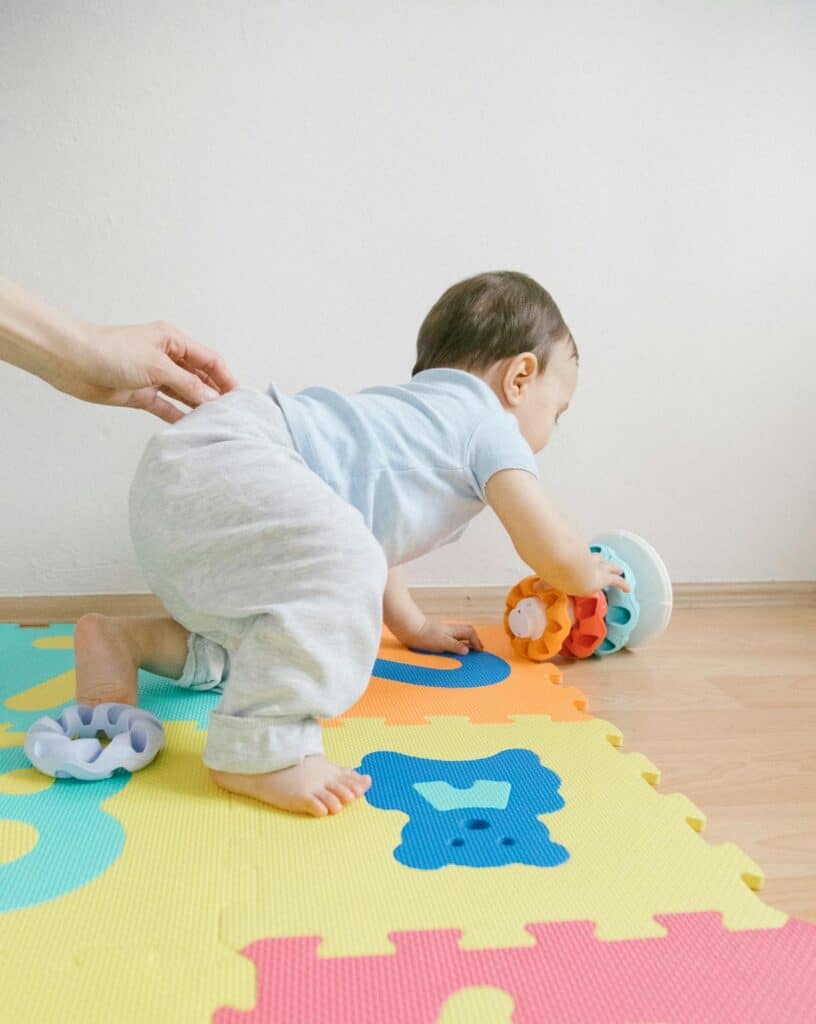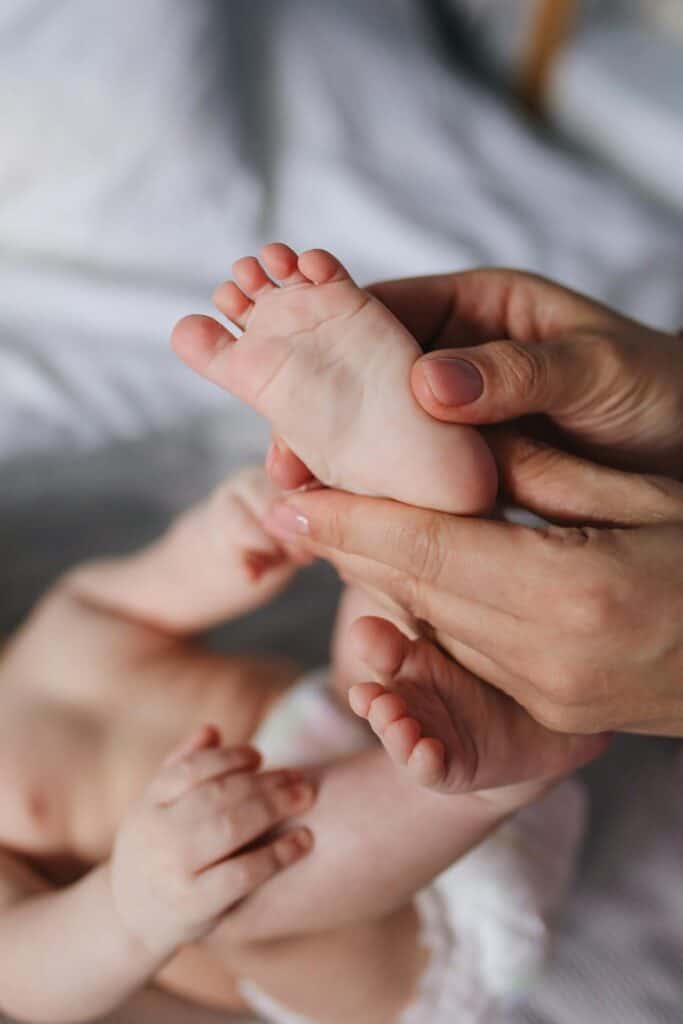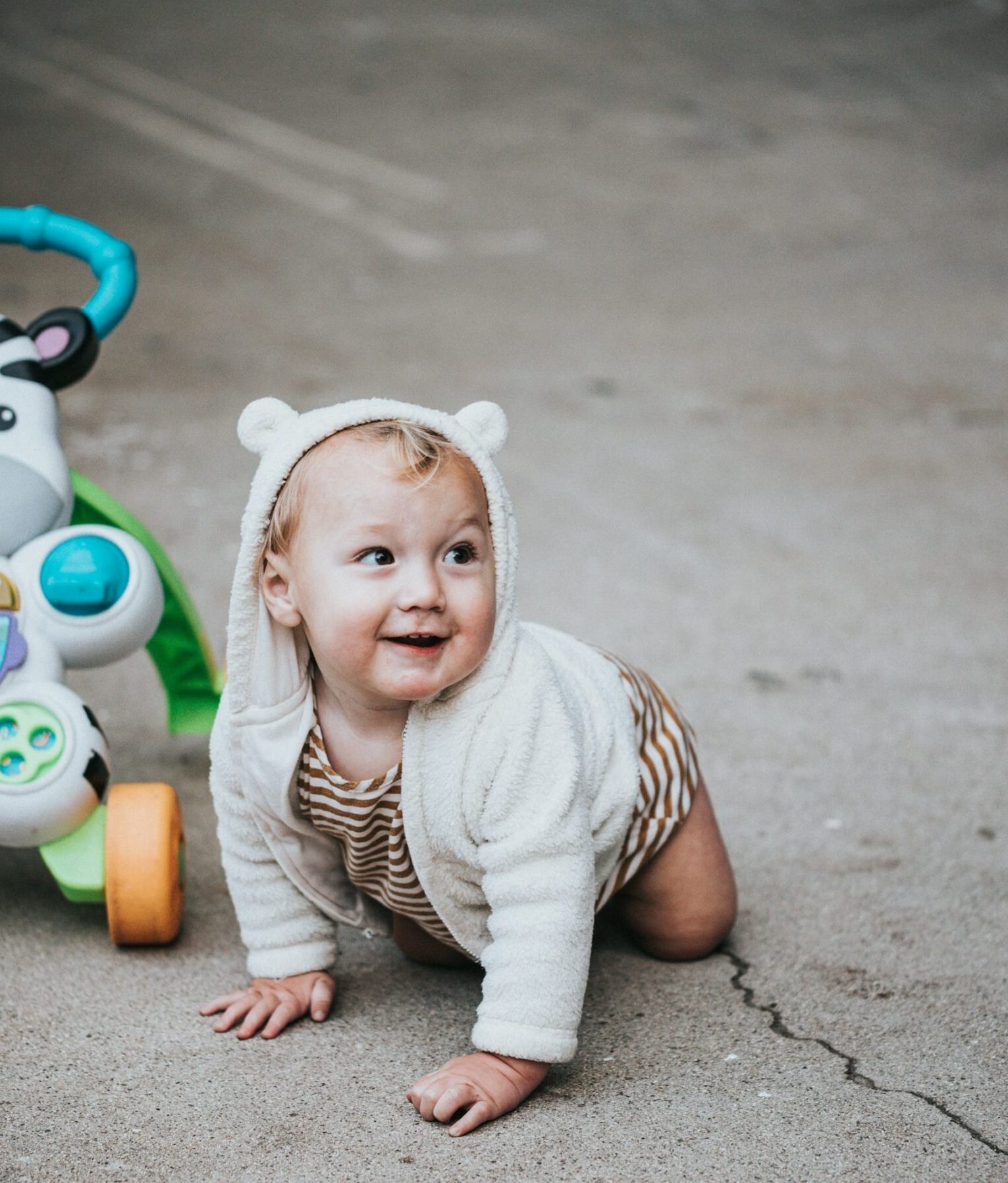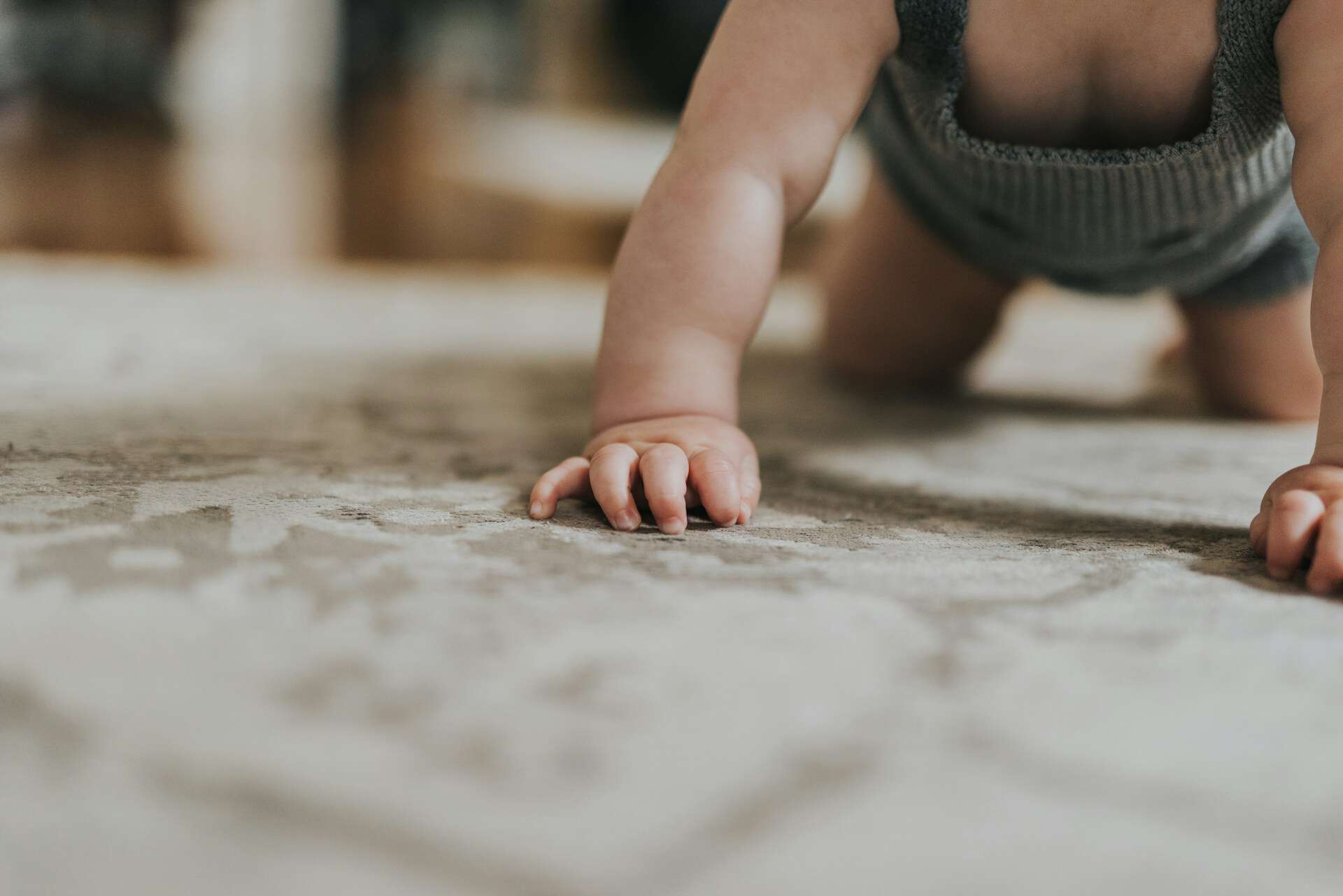How to Help Baby Crawl: Encouraging Movement Milestones
Crawling is not only an exciting milestone but also an essential one. Discover in this article what can you do to help baby crawl!
Crawling is not only an exciting milestone but also an essential one, as it marks a significant leap in your baby’s physical and cognitive development. This phase usually emerges after the baby has mastered sitting and before they take their first steps. It’s a time when your baby begins to understand how to coordinate their movements to propel themselves forward or backward. Patience and encouragement play vital roles in helping your little one learn to crawl—it involves strengthening the muscles necessary for the action and giving them the confidence to explore on their own.
To support your baby in reaching this milestone, you can create a nurturing environment that fosters their growth and curiosity. Ensuring their safety is as important as providing interesting stimuli to encourage movement. Remember, babies develop at their own pace, and while some might take to crawling early, others may need a little extra time and support. It’s important not to compare your child’s progress with others and to give them room to develop their own unique crawling style.
Key Takeaways
- Encouragement and a safe space are crucial for crawling.
- Each baby’s crawling style and timeline are unique.
- Support includes creating a stimulating environment and helping with muscle development.
Understanding Baby’s Developmental Stages
Learning to crawl is a significant milestone in your baby’s physical and cognitive development. This process lays the foundation for later movement, such as walking, and helps in the exploration of the environment. I’ve created a helpful sheet that guides you through key motor development milestones in your child’s first year of life. Grab your copy below and take the first step towards supporting your child’s growth and development with confidence!
Why Is It Important For Babies To Learn To Crawl?
Crawling is not only about getting from point A to point B; it’s a crucial stage for enhancing your baby’s muscle strength, coordination, and spatial awareness. This kind of movement encourages the development of motor skills and cognitive abilities such as problem-solving and planning.
When Do Babies Start Crawling?
The timing for when babies start crawling can vary widely, typically occurring at around 6 to 10 months old. Remember, each baby is unique and will reach this and other milestones at their own pace. Some infants might start as early as 6 months, while others may take a bit longer.
Milestones Before Crawling
Before babies begin to crawl, they pass through several milestones:
- Gaining head and neck control: Strengthens neck and upper body.
- Rolling: Develops muscles and coordination.
- Moving forward on belly: Some babies may start to crawl backward before moving forward.
- Rocking on Hands and Knees: Prepares muscles to hold their weight on their arms and legs.
How will I know my baby is ready to crawl?
You’ll notice certain signs when your baby is ready to crawl. Look for them being able to support their weight on hands and knees, showing curiosity by reaching for objects, and attempting to move by rocking back and forth. These are all indicators that your baby is building up to crawling.
Creating a Safe and Stimulating Environment
Your goal is to make a space that is both secure and engaging to encourage exploration and movement.
Setting Up the Space
First, ensure the area is spacious and free of clutter. You’ll want to create an open space where your baby can move around freely. Use soft mats or rugs to cushion their journey and to provide a comfortable surface for them to practice their skills.
How to Child-Proof Your Home for Crawling
- Secure furniture: anchor heavy furniture to the walls to prevent tipping.
- Block off dangerous areas: use baby gates to restrict access to stairs or rooms with hazards.
- Remove small objects: keep choking hazards out of reach and ensure the floor is clean and clear.
- Cover electrical outlets: place safety plugs in unused outlets and conceal cords to prevent accidents.
- Since your baby is about to become mobile, protect all the potential danger areas: get table corner guards, door stops and door finger protection.
Choosing the Right Toys
Select toys that encourage your baby to move. Look for:
- Mobile Toys: Toys that move slightly out of reach can motivate your baby to go after them.
- Interactive Toys: Bright, colorful toys with different textures that produce sounds when touched can stimulate your baby’s senses and entice them to crawl toward them.

Fun fact: Our daughter was strongly motivated to crawl just to reach our home shoes; not even one toy inspired her the same way.
How to Support Your Baby’s Crawling Skills
Here’s how you can help your little one master the art of crawling with some focused activities.

Tummy Time Practices
Tummy time is the cornerstone of developing crawling skills. Start by placing your baby on their stomach for a few minutes at a time, several times a day. This helps strengthen their neck, back, and arm muscles, all of which are crucial for crawling. As they grow stronger, increase the duration of tummy time.
Let Your Baby Play In Front Of A Mirror
Playing in front of a mirror can intrigue and encourage your baby to lift their head and push up on their arms. This fascination with their own reflection stimulates physical movement and self-awareness.
Encourage Your Baby To Play With Their Hands Elevated
Elevate your baby’s hands on soft, stable surfaces like a rolled-up towel. This slight elevation changes the angle of their body and can help them understand weight shifting, a key aspect of crawling.
Give Your Baby A Massage
A gentle massage can stimulate your baby’s sense of touch and muscle growth. Massaging their arms, legs, and back can also increase their awareness of these body parts and encourage movement.

Teach Baby to Rock on Hands and Knees
Encourage your baby to rock back and forth on their hands and knees. This movement helps them build the muscle strength and balance needed for crawling while also getting them comfortable with the crawling position.
Position Toys Out of Reach
Place toys just out of your baby’s reach to motivate them to move. This encourages them to plan and try different strategies to reach their goal, whether it’s stretching, rolling, or eventually crawling.
Take Your Baby Out Of Supportive Devices
Avoid putting your baby in walkers and bouncers as these can hinder muscle development required for crawling. Instead, allow your baby more floor time to explore and exercise their muscles actively.
Give your baby a little extra motivation
If you notice a particular desire of your baby for a certain toy or other household object, use it, let your baby see it, and try to reach it. This can be a great motivator for your baby to start moving.
Get on the floor and crawl with your baby
Babies learn a lot by just imitating us adults! Seeing you crawl can be the best example for your baby. It shows them how to move and can be a great bonding experience.
What are the Common styles of crawling?
Babies, to your surprise, can move in completely different styles. Here are some common styles of crawling:
The classic crawl on All Fours
The classic crawl typically involves your baby balancing on their hands and knees. In this style, babies alternate moving opposite hands and knees to propel themselves forward. This classic crawl is probably the one you’re most familiar with.
The bear crawl
In the bear crawl, babies lift their hips high in the air, straightening their elbows and knees as they move. This style is like a miniature bear walking on all fours and may seem more advanced as it requires more strength and balance.
The scoot
Some babies may opt for the scoot, where they sit on their bottoms and use their hands to push themselves forward. This method is effective for babies who prefer to keep a watchful eye on their surroundings.
The commando crawl or “army” crawl
For the commando crawl, your baby lies flat on their belly and pulls themselves forward using their arms. This army-style crawl is quite common, especially in the early stages of learning to crawl.
How to encourage symmetrical crawling on All Fours
To encourage symmetrical crawling on all fours, engage your baby with toys that get them to reach across their body. This promotes the coordination of opposite arms and legs, which is key in symmetrical crawling patterns. You also need to pay attention to any asymmetry in your baby’s body. Babies are often born with asymmetries that lead to the head tilted to one side during sleep, pushing with one leg when trying to crawl, or bending of the body. It’s necessary to monitor these things and address them to your pediatrician. It can be easily corrected with massage and exercises. Also make sure to carry your baby in different positions from birth: change the feeding side, the shoulder when you put the baby to burp and their position in the crib.
Addressing Common Challenges
Helping your baby learn to crawl involves overcoming a few common challenges. Below are tips to support your baby’s developmental journey, keeping in mind the uniqueness of each child’s growth milestones.
Dealing with Frustration
Babies often show signs of frustration when learning to crawl. Encourage them with positive reinforcement and celebrate small victories. If they become too agitated, take a break and try again later.
Developmental concerns with crawling: When Should I Worry?
Most babies begin crawling between 7 and 10 months. Some variations are normal, but if your baby isn’t showing interest in moving by the age of 12 months, a check-up might be warranted. Refer to insights from a pediatric physical therapist for further understanding.
What To Do If Your Baby Doesn’t Start Crawling
If your baby isn’t crawling yet:
- Ensure plenty of tummy time to build muscle strength.
- Starting at 4 months of age, put your baby to the floor, and avoid using any supporting devices such as swings, loungers, bouncers, walkers and cribs during awake time.
- Use a foam play mat, specifically designed to protect the child from the cool floor, but allows the child to have traction on the surface.
- It’s a good idea to remove socks and sometimes even onesies to let your baby’s skin better grip the floor surface while learning to crawl. And the muscles of the foot without a sock or shoe are better exercised.
- Use toys to encourage movement, placing them just out of reach.
When to Seek Professional Advice
Seek professional advice if:
- Your baby seems to struggle or shows no interest in moving.
- If your child is not reaching other gross motor and physical milestones and displays delays in other developmental aspects apart from crawling.
In general, a delay in crawling or an absence of crawling does not necessarily indicate a problem. However, if you have any doubts or concerns, consult the experts.
When will my child stop crawling?
The transition from crawling to walking is a significant milestone and varies from child to child. Typically, most infants will begin to crawl between 6 to 10 months old and will start walking around 12 to 18 months. Consequently, you can expect your child to stop crawling once they have gained sufficient confidence and balance to walk independently.
Here are key indicators to watch for that suggest your child is moving on from crawling:
- Pulling up: Your child will start pulling themselves up using furniture to stand.
- Cruising: They may begin to move around the room holding onto furniture for support.
- Standing unassisted: As their leg muscles strengthen, they might stand without support for a few moments.
- Taking steps: The exciting moment when your child takes their first steps! They may be unsteady at first, but this marks the beginning of walking.
Babies often alternate between crawling and walking as they perfect their skills. Even after their first steps, babies may still crawl when they want to move quickly or navigate through small spaces. My daughter, even at the age of 3, continues to crawl around the house sometimes as part of play.
In Summary
After encouraging plenty of tummy time and engaging in activities that promote muscle development and coordination, you’re well on your way to helping your baby learn to crawl. It’s important to remember that every baby progresses at their own pace, so patience and consistent practice are key.

To maximize your baby’s potential for crawling, continue to provide a safe and supportive environment. Keep up with the daily tummy time sessions, and make use of toys that entice your little one to reach out and move. Don’t forget to praise their efforts—your encouragement makes a significant difference!
Subscribe to Babyhood And Beyond!
Get updates on the latest posts and more from Babyhood And Beyond straight to your inbox
Or let’s get in touch
To ask us any question, please go to contact us page.

